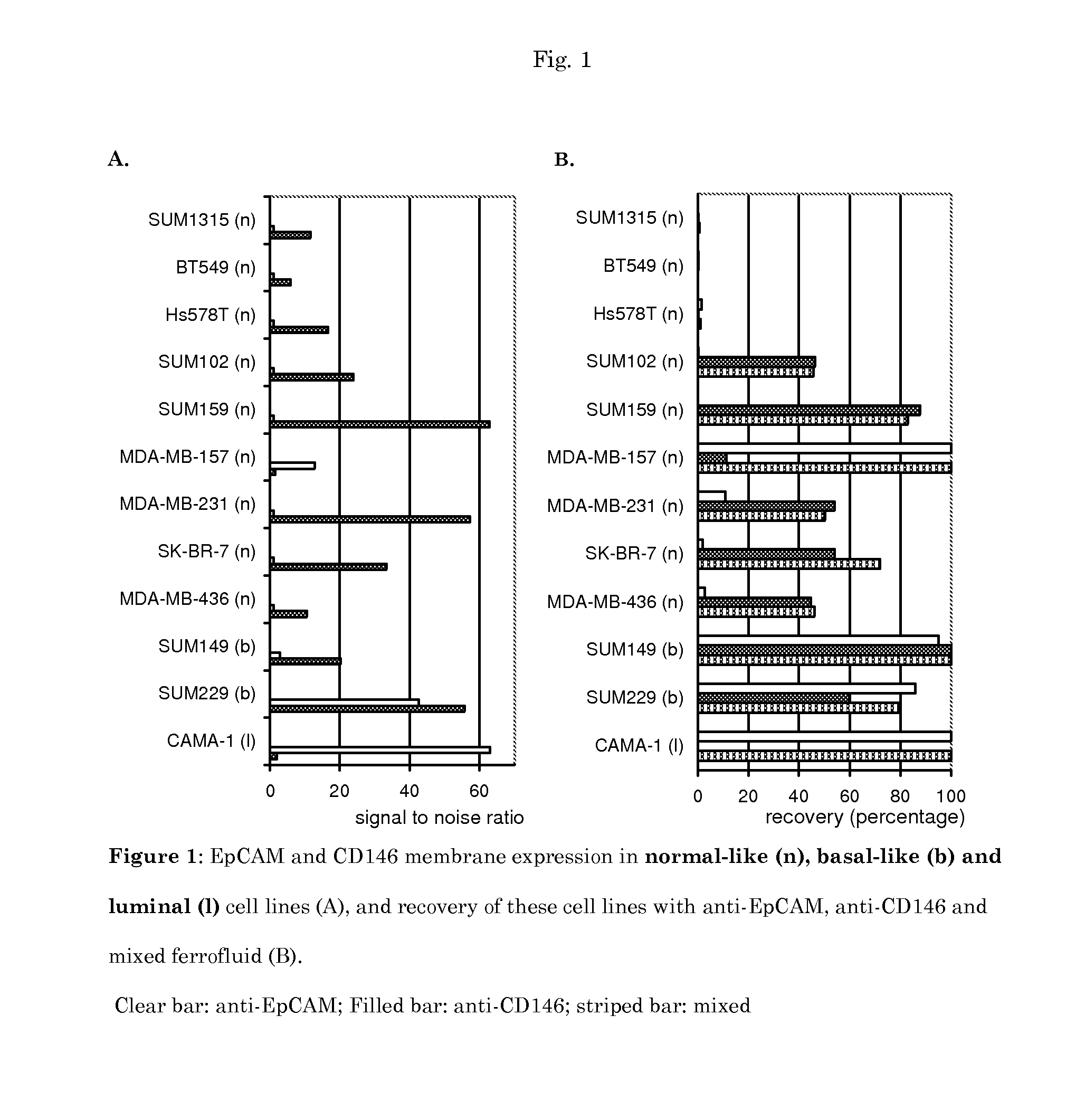Identifying circulating tumor cells (CTCS) using cd146 in breast cancer patients
a technology for breast cancer and tumor cells, applied in the field of diagnostic testing, can solve the problems of difficult implementation of a suitable assay, lack of predictive and prognostic markers for patients with metastatic breast cancer, and major challenges in ctc detection of tumor heterogeneity, and achieve the effect of increasing the risk of cancer
- Summary
- Abstract
- Description
- Claims
- Application Information
AI Technical Summary
Benefits of technology
Problems solved by technology
Method used
Image
Examples
examples
Materials & Methods
[0083]The intrinsic subtype of our well-defined panel of 41 human breast cancer cell lines (Elstrodt F, Hollestelle A, Nagel J H et al. BRCA1 mutation analysis of 41 human breast cancer cell lines reveals three new deleterious mutants. Cancer Res 2006; 66: 41-45) were determined by gene expression profiling as previously described (Sieuwerts et al. J Natl Cancer Inst 2009; 100: 61-66), which identified 10 normal-like and 5 basal cell lines (table 1).
[0084]The transcript levels of CD146 and EpCAM of cell lines were analyzed with Affymetrix GeneChip Exon 1.0 ST Arrays (Affymetrix UK Ltd., Wickham la Wooburn Grn, UK) and real-time PCR. RNA was isolated from breast cancer cell lines with the RNeasy (Micro) kit (Qiagen BV, Venlo, the Netherlands). cDNA was prepared by use of the Superscript II RNase H-kit from Invitrogen (Breda, the Netherlands). The resulting cDNA preparations were analyzed by real-time PCR with TaqMan gene expression assays and TaqMan Universal PCR M...
PUM
| Property | Measurement | Unit |
|---|---|---|
| Tm | aaaaa | aaaaa |
| temperature | aaaaa | aaaaa |
| temperature | aaaaa | aaaaa |
Abstract
Description
Claims
Application Information
 Login to View More
Login to View More - R&D
- Intellectual Property
- Life Sciences
- Materials
- Tech Scout
- Unparalleled Data Quality
- Higher Quality Content
- 60% Fewer Hallucinations
Browse by: Latest US Patents, China's latest patents, Technical Efficacy Thesaurus, Application Domain, Technology Topic, Popular Technical Reports.
© 2025 PatSnap. All rights reserved.Legal|Privacy policy|Modern Slavery Act Transparency Statement|Sitemap|About US| Contact US: help@patsnap.com

